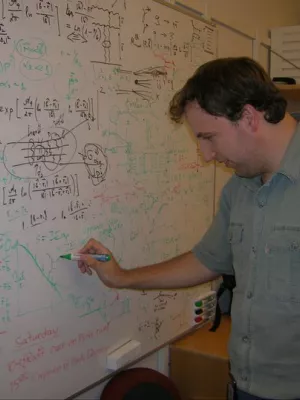
Roman Pasechnik
Senior lecturer

Can the diphoton enhancement at 750 GeV be due to a neutral technipion?
Author
Summary, in English
We discuss a scenario in which the diphoton enhancement at Mγγ=750 GeV, observed by the ATLAS and CMS collaborations, is a neutral technipion π0. We consider two distinct minimal models for the dynamical electroweak symmetry breaking. In a first one, two-flavor vectorlike technicolor (VTC) model, we assume that the two-photon fusion is a dominant production mechanism. We include γγ→π0 and production of technipion associated with one or two jets. All the considered mechanisms give similar contributions. With the strong Yukawa (technipion-techniquark) coupling gTC≃20 we roughly obtain the measured cross section of the "signal" with a small difficulty of simultaneous description of the s=13 TeV and s=8 TeV data. With such values of gTC we get a relatively small Γtot. In a second approach, one-family walking technicolor (WTC) model, the isoscalar technipion is produced dominantly via the gluon-gluon fusion. We also discuss the size of the signal at lower energies (LHC, Tevatron) for γγ (VTC) and jet-jet (WTC) final states and check consistency with the existing experimental data. We predict a measurable cross section for πO production associated with one or two soft jets. The technipion signal in both models is compared with the SM background diphoton contributions. We observe the dominance of the inelastic-inelastic mechanism for γγ induced processes. In the VTC scenario, we predict the signal cross section for purely exclusive pp→ppγγ processes at s=13 TeV to be about 0.2 fb. Such a cross section would be, however, difficult to measure with the planned integrated luminosity. In all considered cases the signal is below the background or/and below the threshold set by statistics.
Department/s
- Theoretical Particle Physics - Has been reorganised
- Department of Astronomy and Theoretical Physics - Has been reorganised
Publishing year
2016-07-19
Language
English
Publication/Series
Physical Review D (Particles, Fields, Gravitation and Cosmology)
Volume
94
Issue
1
Document type
Journal article
Publisher
American Physical Society
Topic
- Subatomic Physics
Status
Published
ISBN/ISSN/Other
- ISSN: 1550-7998

